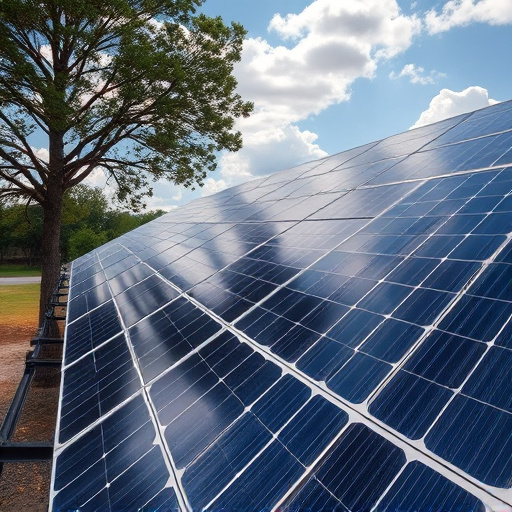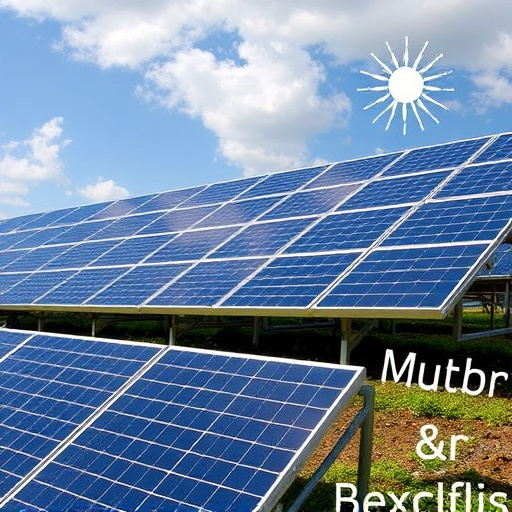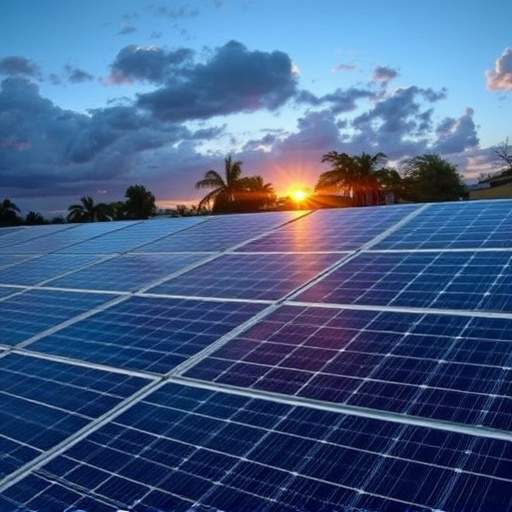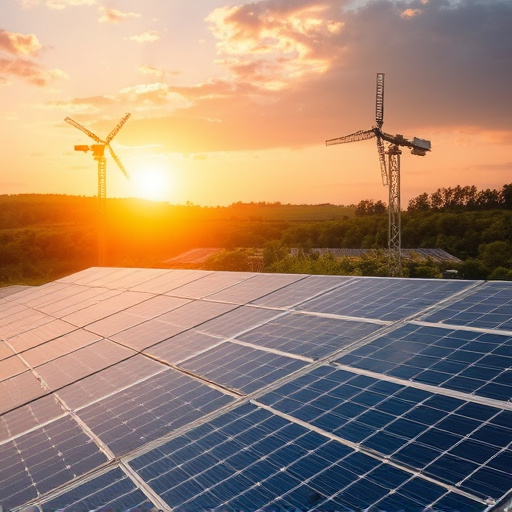The future of Solar Energy is promising due to rapid advancements in storage technology, aiming to overcome the intermittent nature of solar generation. Emerging trends focus on increasing efficiency, scalability, and reducing costs with technologies like lithium-ion and flow batteries. Smart grid infrastructure, combined with improved conversion efficiency, enhances energy distribution and pricing. Ongoing research drives innovative solutions, positioning Solar Energy as a sustainable and versatile base load resource.
“Unleashing the full potential of solar energy requires an understanding and optimization of its storage. This article explores comprehensive solutions to maximize your solar power utilization. We break down the basics of solar energy storage, highlighting key types such as batteries, pumped hydro, and thermal systems. Additionally, we delve into strategies for efficient storage management and discuss emerging trends shaping the future of solar energy technology. Embrace the revolution in clean energy with our insights on maximizing every sun-kissed moment.”
- Understanding Solar Energy Storage: The Basics
- Types of Solar Energy Storage Systems
- Maximizing Energy Use with Efficient Storage
- Future Trends in Solar Energy Storage Technology
Understanding Solar Energy Storage: The Basics

Types of Solar Energy Storage Systems

Solar energy storage systems play a pivotal role in maximizing the use of renewable power generated from solar panels. These systems capture and store excess energy produced during peak sun exposure for later use, ensuring a steady supply even when the sun is not shining. There are primarily two types: battery storage and pumped hydro storage.
Battery storage systems, a popular choice due to their flexibility and scalability, utilize rechargeable batteries to store solar energy. These batteries can be lithium-ion, lead-acid, or saltwater batteries, each with varying capacities and efficiencies. Pumped hydro storage, on the other hand, employs the principle of water flow to generate electricity, storing excess energy by pumping water up to a higher elevation during periods of high solar generation. This stored potential energy is later converted back into electricity as needed. Both systems contribute significantly to grid stability and enhance the overall efficiency of solar energy utilization.
Maximizing Energy Use with Efficient Storage

Future Trends in Solar Energy Storage Technology

The future of solar energy storage looks promising, with technology rapidly advancing to bridge the gap between intermittent solar generation and consistent energy demand. Emerging trends indicate a move towards more efficient, scalable, and cost-effective solutions. One notable development is the integration of advanced battery systems, such as lithium-ion and flow batteries, which offer longer durations and higher power outputs compared to traditional storage methods. These technologies are set to play a pivotal role in enabling solar energy to become a reliable base load resource.
Additionally, there’s a growing emphasis on smart grid infrastructure, where decentralized storage systems communicate with the grid, optimizing energy distribution and pricing. This trend, coupled with improvements in energy conversion efficiency, will enhance the overall flexibility and resilience of solar power systems. As research progresses, we can expect to see more innovative solutions emerge, further solidifying solar energy’s position as a sustainable and versatile energy source for the future.
Solar energy storage is a game-changer for maximizing renewable power utilization. By understanding the basics and exploring various storage systems, we can efficiently store excess solar energy for later use, ensuring a consistent power supply even when the sun isn’t shining. As technology advances, future trends promise improved efficiency and enhanced storage capabilities, making solar energy an even more viable and sustainable option for our energy needs.
